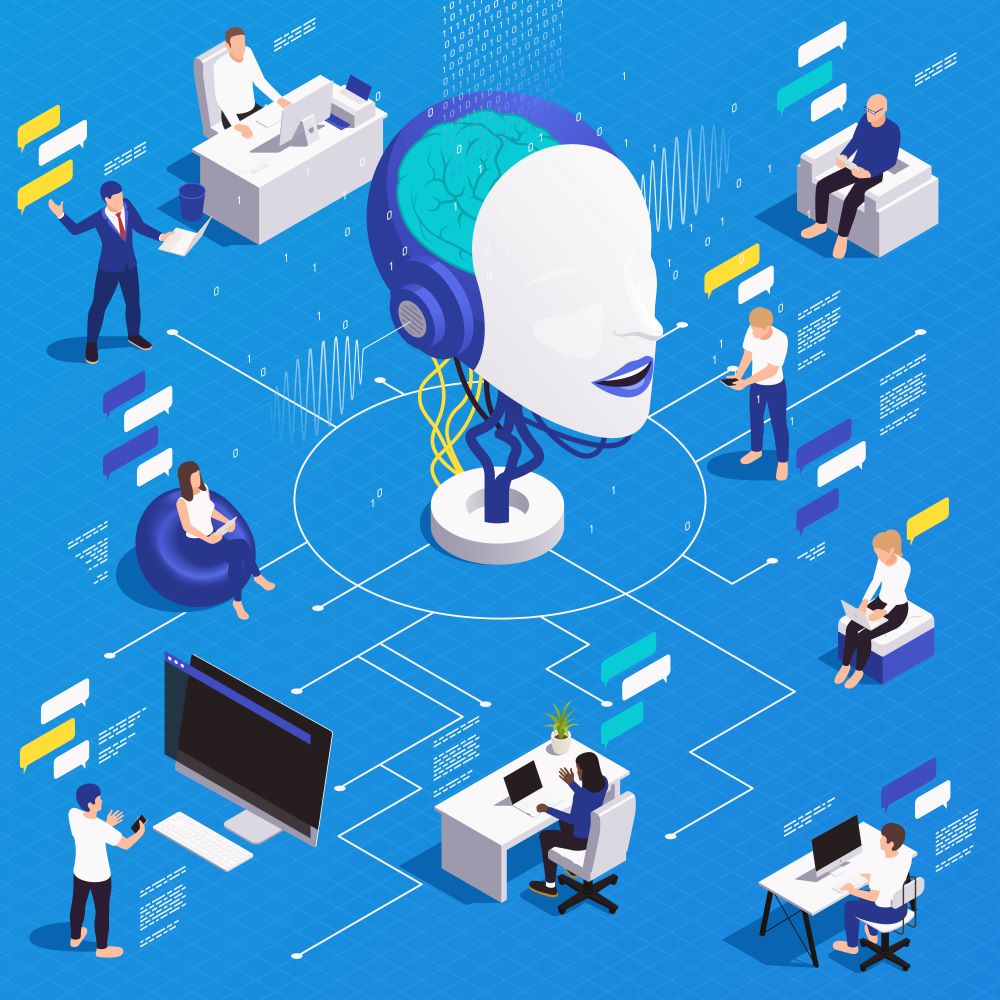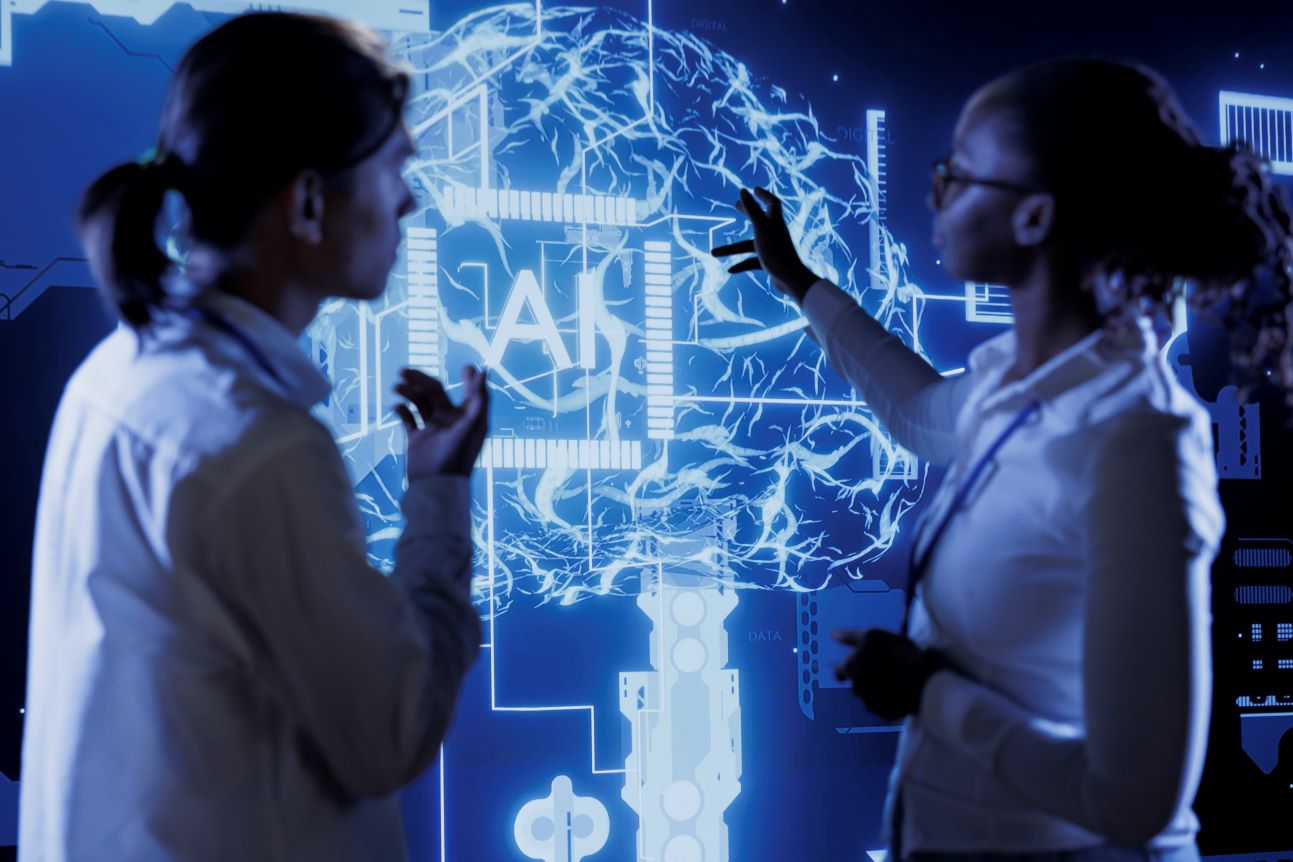We have written many blog posts about artificial intelligence (AI) and its impact on the world through revolutions and innovations. It is advancing our lives with multiple opportunities and benefits. However, there are multiple real-life concerns about AI that need to be addressed. In this blog post, we will explore the top eight concerns posed by AI in our society today.
Real-life concerns about AI
Bias and Discrimination
Data processing and quick decision-making is done by AI algorithms. But it is regardless of bias and discrimination. These algorithms are not trained to understand different biases including historical and cultural differences across the world. In reality, it can maintain and boost existing biases resulting in discriminatory outcomes. Refer to the below types of bias in AI.

Training data
This occurs when the data used to train an AI system is not representative of the real-world population. For example, if a facial recognition is trained mainly on data from one demographic group, it may perform poorly on other groups, leading to biased outcomes.
Algorithmic
This refers to the bias that can be inherent in the algorithms themselves. For example, if an algorithm is designed to prioritize certain factors like income over others, it may lead to biased decisions.
Interaction
This occurs when AI systems interact with users in a biased manner. For example, a chatbot trained on biased data may provide different responses to various users according to their demographic characteristics.
Implications of Bias in AI
These are far-reaching and can have serious consequences. In hiring, biased AI systems can keep going with existing inequalities by favoring certain candidates over others based on irrelevant factors. In healthcare, it can lead to incorrect diagnoses or treatments, particularly for underrepresented groups. In criminal justice, it can result in unfair sentencing or profiling based on race or other factors.
Mitigating Bias in AI
It involves ensuring that the data used to train AI systems is diverse and representative, testing AI systems for bias before deployment, and designing algorithms that are transparent and explainable. Additionally, it requires ongoing monitoring and adjustment to ensure that AI systems are not keeping up with biases.
Job Displacement
AI can disrupt the workforce and lead to job displacement. As AI technologies become more advanced, there is growing fear that automation will replace human workers in various industries.

Causes of Job Displacement
It is primarily driven by automation, where tasks that were originally performed by humans are now carried out by AI robots. This is made possible by capabilities such as machine learning and natural language processing, which allow machines to perform complex tasks that were once exclusive to humans. Sectors such as manufacturing and customer service that rely heavily on routine or repetitive tasks, are particularly open to job displacement.
Impacts of Job Displacement
For individuals, job displacement can lead to unemployment, financial insecurity, and a loss of purpose. It can also have broader societal impacts, such as widening income inequality and social unrest. Additionally, certain demographic groups, such as low-skilled workers and older workers, may be affected by job change.
Addressing this issue requires a proactive and multi-faceted approach. One strategy is to retrain and upskill workers to prepare them for new roles that are emerging as a result of AI. Governments and businesses can also implement policies and programs to support workers during transitions, such as providing access to education and training programs, offering financial assistance, and implementing job placement services.
Privacy Concerns
AI collects and uses personal data. It often rely on vast amounts of data to train their algorithms, and this data can include sensitive information about individuals. This could be misused or exploited, leading to privacy breaches and violations of individuals’ rights.
Many AI systems operate as “black boxes,” meaning that their decision-making processes are opaque and difficult to understand. This lack of transparency can lose trust in AI and raise concerns about how decisions are being made and whether they are fair and ethical.
Strategies to mitigate Privacy Concerns
- Implementing privacy by design principles, such as minimizing the collection and retention of personal data and ensuring that data is anonymized whenever possible.
- Increasing transparency by making their decision-making processes more understandable and accessible to individuals.
- Implementing strong data protection measures, such as encryption and secure data storage, to protect personal data from unauthorized access and breaches.

- Ensuring that AI systems are designed and implemented in a way that complies with relevant privacy laws and regulations, such as the General Data Protection Regulation (GDPR) in the European Union.
Security Risks
Refer to the following list to know the potential security risks.
- Data Breaches: AI rely on large amounts of data to function, and this can be a target for hackers. Data breaches can lead to sensitive information being exposed, such as personal data or proprietary business information.
- Manipulation: It can be vulnerable to manipulation by malicious actors. For example, attackers could manipulate the input data to produce a desired result, such as fooling a facial recognition system or altering the results of a machine learning model.
- Adversarial Attacks: These attacks aims to deceive AI by introducing small, carefully crafted changes to input data. These attacks can fool AI into making incorrect decisions or classifications.
- Privacy Violations: AI can process personal data violating individuals’ privacy rights. For example, AI used in healthcare may reveal sensitive medical information if not properly secured.
How to reduce security risks
- Secure Development Practices: Implementing practices, such as conducting regular security audits and penetration testing, can identify and address vulnerabilities.
- Data Protection: Applying measures, such as encryption and access controls, can protect sensitive data from unauthorized access and breaches. Strong Cybersecurity can shield information, personal data, and everything available on the internet-connected system
- Adversarial Training: Training AI to recognize and defend against adversarial attacks can help mitigate the risk of these types of attacks.
- User Awareness: Educating users about the potential security risks can prevent security breaches and vulnerabilities.
Lack of Accountability
It refers to the absence of clear responsibility and oversight in the development and deployment of AI. It can operate in complex and unpredictable ways, making it difficult to assign responsibility for their actions. This lack of accountability can lead to unethical behavior, bias, and privacy violations.
How to promote accountability in AI
- Regulatory Frameworks: Implementing clear and enforceable rules governing the AI can ensure accountability and promote ethical behavior. These frameworks should address bias, privacy, and transparency in AI.
- Ethical Guidelines: Developing and adhering to ethical guidelines and best practices can guide the responsible deployment of AI. These should emphasize principles such as fairness, transparency, and accountability.
- Stakeholder Engagement: Engaging with stakeholders, including developers, users, and policymakers, can build a culture of accountability. Involving stakeholders in the decision-making process can lead to more responsible and ethical AI development.
Social Isolation
AI-driven technologies, such as social media platforms and virtual assistants, have changed the way we communicate. They have led to a decrease in face-to-face interactions and a rise in feelings of loneliness and isolation. This is true for vulnerable populations, such as the elderly and those living in rural areas, who may have limited access to technology or struggle to use it effectively.

How to address social isolation
- Promoting Digital Literacy: Educating individuals, especially older adults, about technology can reduce feelings of isolation and increase their connectivity with others.
- Encouraging Face-to-Face Interaction: Encouraging people to prioritize face-to-face interactions can generate deeper connections and reduce feelings of isolation.
- Creating Technology-Free Spaces: Designating technology-free spaces, such as libraries or community centers, can provide opportunities to connect in person.
- Community Engagement: Encouraging community engagement through volunteering, clubs, or other social activities can reduce social isolation and create a sense of belonging.
Dependency and Control
As we become more reliant on AI, there is a risk that we may become overly dependent on it, leading to a loss of skills and autonomy. For example, due to rising autonomous vehicles, there is a concern that drivers may become too reliant on the AI, resulting in a lack of preparedness to take over in emergency situations.
AI systems can lead to decisions that are difficult to understand or predict. This lack of transparency can lead to a loss of control over decision-making processes, as individuals may not fully understand or be able to influence the decisions made by AI systems.
How to get rid of dependency and control
This can be achieved by designing AI systems that are transparent, explainable, and allow for human oversight. Additionally, promoting digital literacy and education can help individuals better understand AI, allowing them to make more informed decisions about usage of these technologies.



